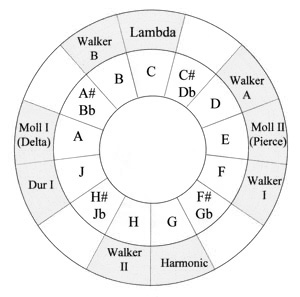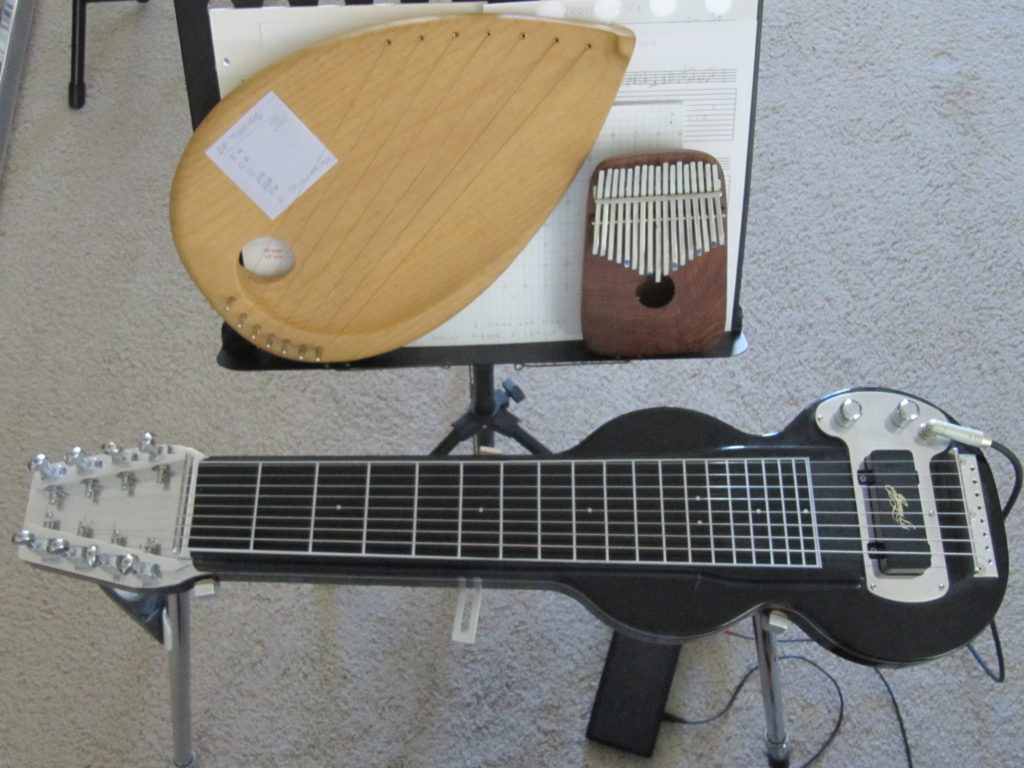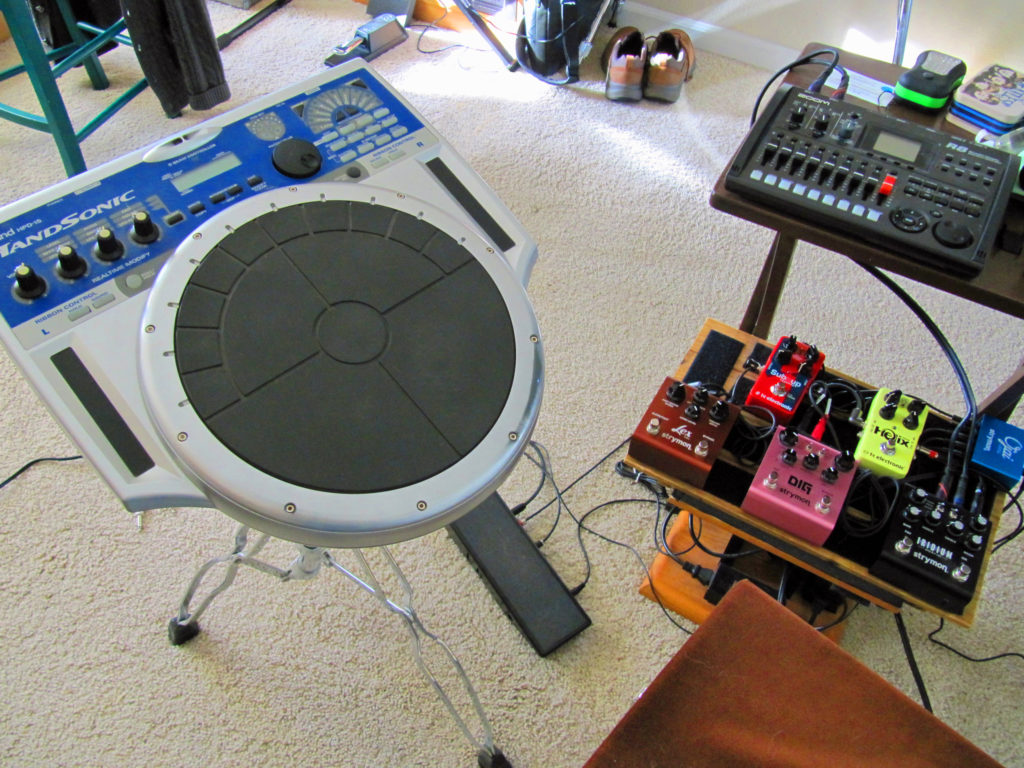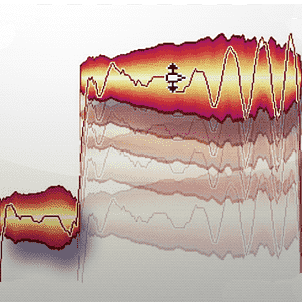This electronic piece uses the otonal chords CGA and GBE, drawing 4 random 9-note phrases from their notes. Each phrase was played repeatedly (12 times) against a slightly faster version of itself, creating a rhythmic phasing effect. The basic tracks were created from Java code using the JMusic library, and then brought together in Audacity to make the final result.
3 Bohlen-Pierce Instruments
Relapses
Here’s another ambient steel guitar recording using the Bohlen-Pierce scale. This one is an overdub of 3 improvised tracks. Each take had different effects settings.
Buffalo Panic
Tajamby, steel guitar improvisation
Bidirectional Prelude
Inspired by the music of Steve Reich.
Diminished Capacity
Here’s another ambient piece based on chording algorithm used in Tripolar Expedition.
Tripolar Expedition
This algorithmic piece picks random notes from the Bohlen-Pierce scale for a soothing ambient effect. There are 17 iterations, each dropping the highest note from the remaining list.
Stacking 3rds
This short piece, titled “Providence”, contains overlapping Bohlen Pierce chords. Each note includes a harmony 439 cents (9/7) above and another 439 cents below. A pleasant effect with no real parallel in the 12-tone system.
Melodyne 5 Editor
These two pieces were retuned to Bohlen=Pierce with the Melodyne 5 Editor. The first is a jazz piece I wrote on guitar as a teenager, reimagined in Band-in-a-Box with a trombone as the lead instrument. I wonder if an actual trombonist could play these notes.
The second is a sound collage based on Dennis C. Lee’s “Psi-seX 1”. Running these somewhat random noises through a musical scale filter makes a rather pleasant effect, in my opinion.





